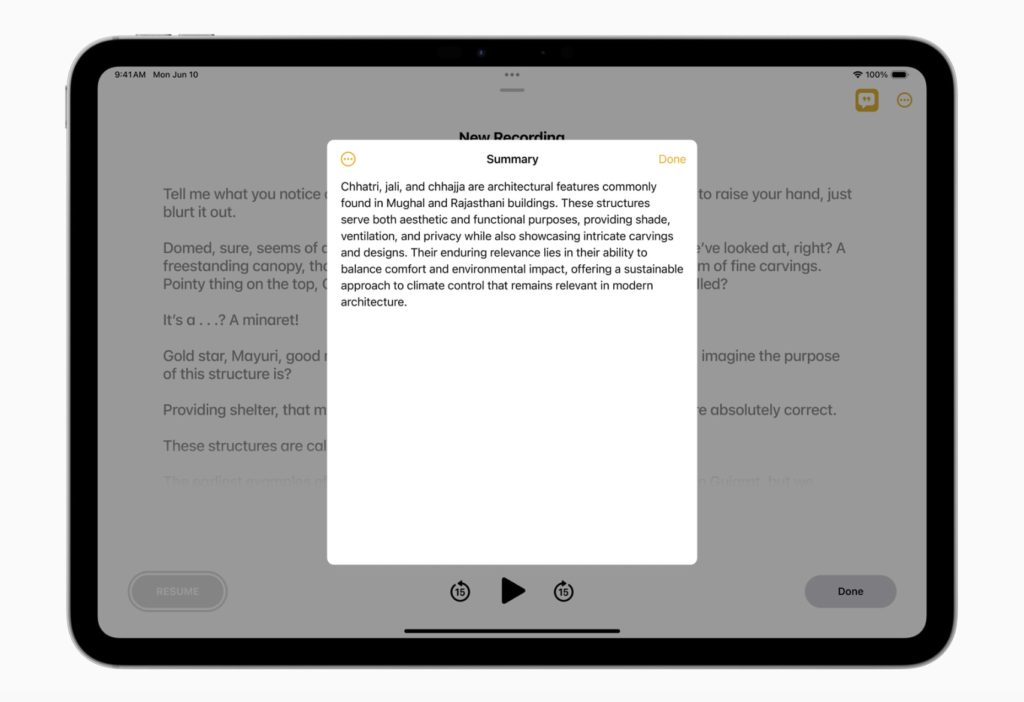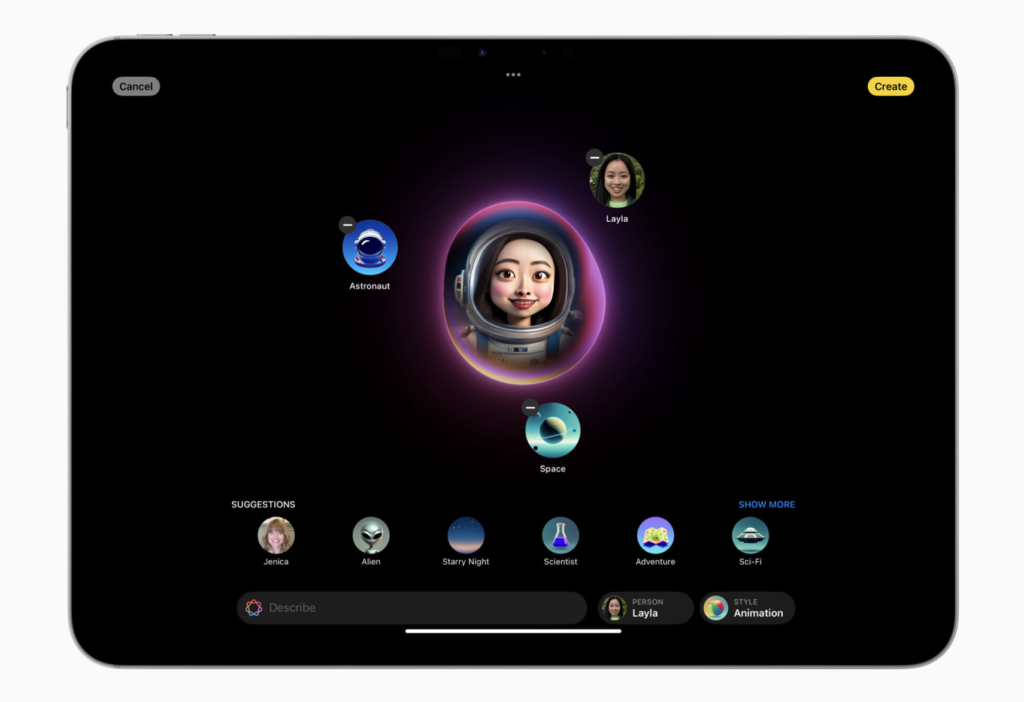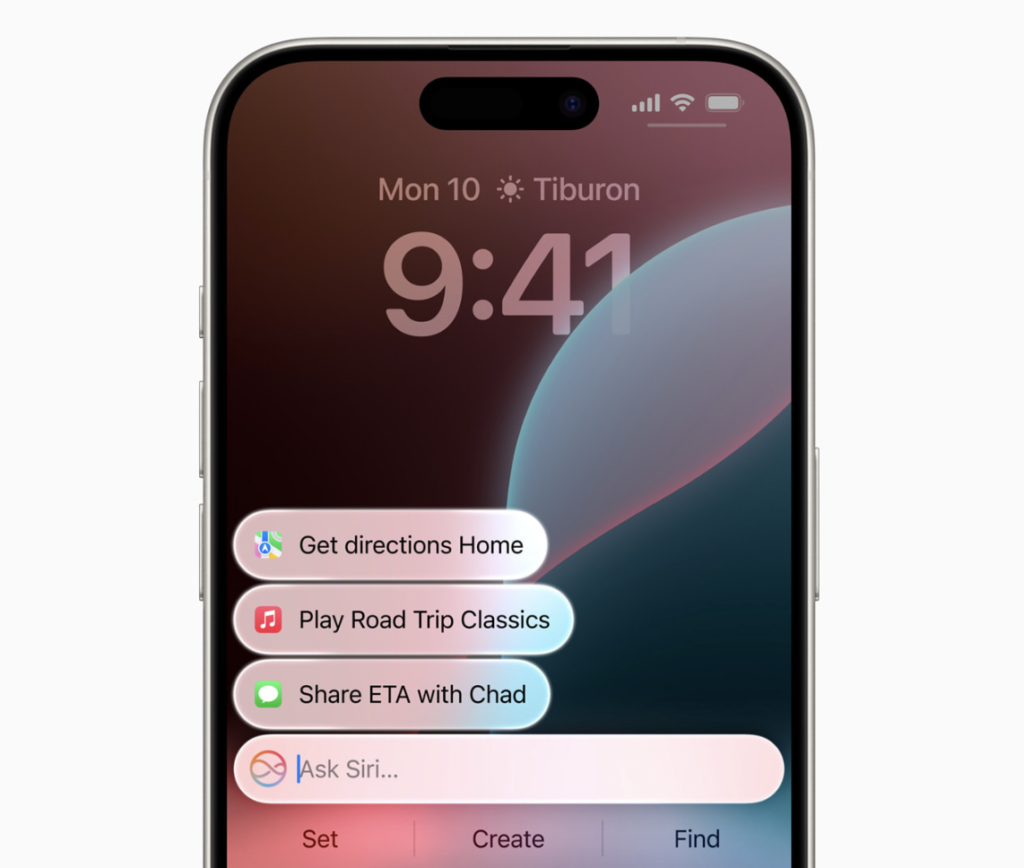Apple’s WWDC 2024 keynote unveiled a major leap forward in user experience with the announcement of several major updates across its many software platforms including iPhone, Mac and iPad, although one could argue that the main highlight of the show was AI.
Branded by the company as “Apple Intelligence,” Tim Cook and co. promise powerful and seamless AI capabilities integrated into Apple’s hardware and software ecosystem, all while prioritizing user privacy. The company also says that Apple Intelligence is designed to integrate functionality with ChatGPT and GPT-4o, with incoming support for other AI models in the future. A lot of flashy promises and buzzwords for sure, but what exactly can one expect from Apple’s AI-infused future? Let’s take a look.
Practicality and Generative Capabilities

Apple claims that its approach towards AI is aimed to “elevate” user experiences in its many products, via a range of features that make interacting with devices more efficient and effortless. For example on iPhone, AI works in a more practical manner for everyday apps and tasks. For example, AI on iOS 18 comes with improved notification management, determining which alerts require immediate attention. A new feature called “Priority Messages” will also highlight important emails, sorting them based on the relative level of urgency within their content. There’s also system-wide writing tools powered by AI offer a variety of functions like proofreading, summarizing, and more, accessible within various apps.

Of course, this new focus on AI also involves generative features. Apple has included the ability to generate creative content – for example, users can send a friend a funny, personalized image directly within their messaging app, which will generate a cartoon image of said friend based on their user photo within the device. We also saw the introduction of “Genmoji,” which allows users to create one-of-a-kind AI-generated emoji on their device, while Image Playground allows for the creation of custom images based on touch gestures and text prompts. There’s also a new “Clean-up Tool” that works similarly to Magic Eraser, which will be available through the Photos app.
Apple Intelligence also extends its capabilities beyond text and images, with support for voice recordings that can be automatically transcribed and summarized. This recording feature also works with phone calls (with user permissions, of course).
Siri and Contextual Assistance

Of course, Apple Intelligence also creeps into the company’s smart voice assistant, Siri. With the new AI features, Siri gets a boost with new animations, the ability to more natural and conversational voice recognition experience, and users can now interact with Siri through typed commands. Siri also gains on-screen awareness, allowing it to understand and respond to tasks based on an app that’s currently being used. For example, a user can ask Siri to “add this address to John’s contact card” after receiving a friend’s new location in a text message. Siri will be able to understand the on-screen content and complete the task seamlessly.
Additionally, Siri can leverage personal information stored in emails, messages, and other apps to personalize its assistance. Need a reminder for a trip mentioned in an email? Siri – at least in theory – will be able to handle that for you.
Privacy and System Requirements
Throughout the entire keynote event, Apple was mindful to focus on working “privacy” into its presentations – the company says that Apple Intelligence is designed to work entirely on-device, without any data collection in the cloud (taking a few jabs at Google in the process). With that said, it does make for a more secure approach to AI, as a user’s personal information stays private, with only relevant data being used during operations.

Given the promise of on-device processing, there is a catch – Apple says that these new AI features will only work with devices running on (what we’re guessing) powerful-enough hardware. This includes Macs and iPads with M-series processors, as well as the iPhone 15 Pro and Pro Max, which both pack the A17 Pro chip inside. Not everyone will be pleased with this limitation however, but given the company’s emphasis with on-device AI, it’s understandable to a degree.
With all that said, users can expect Apple Intelligence to roll out later this year.




